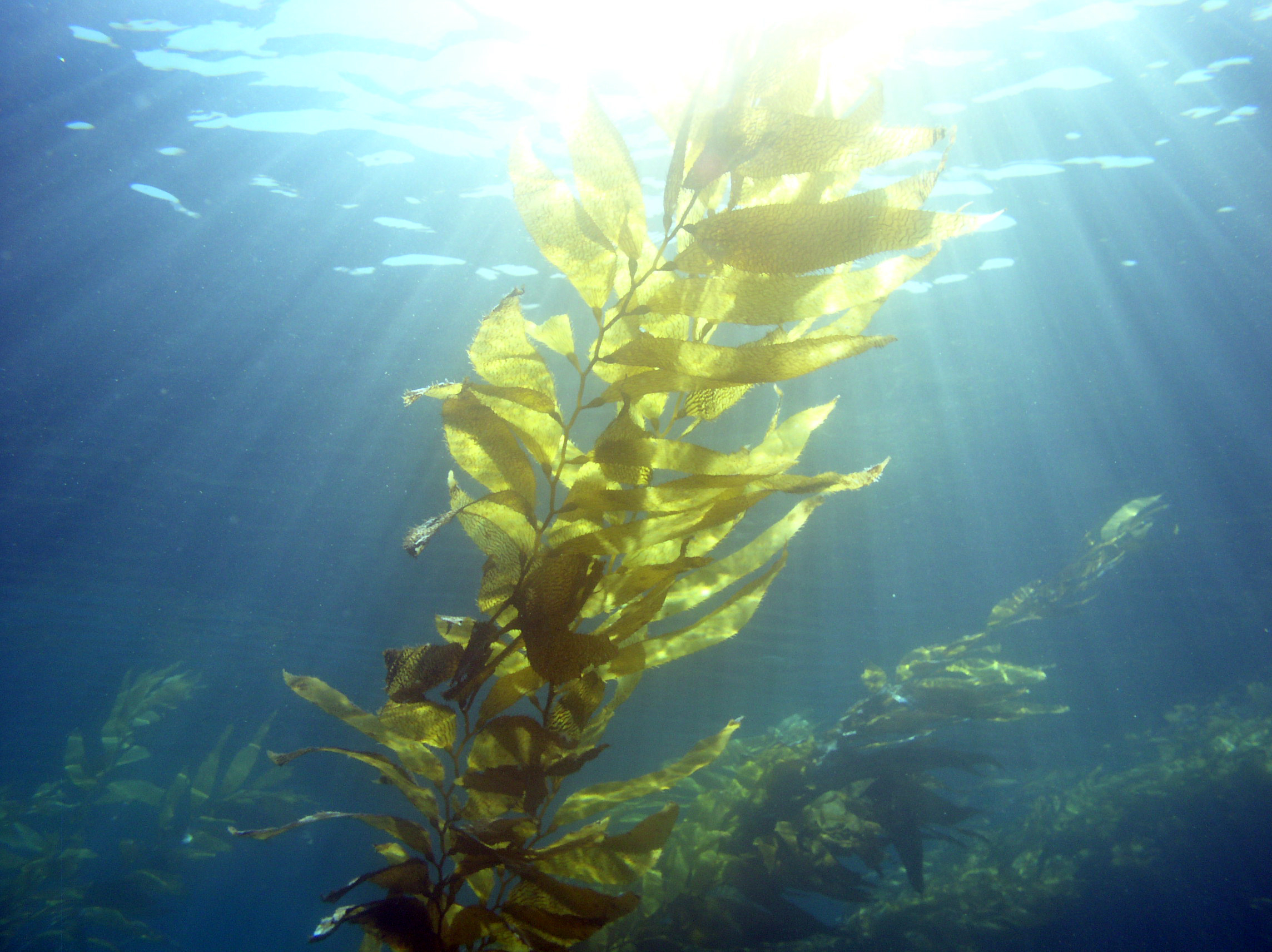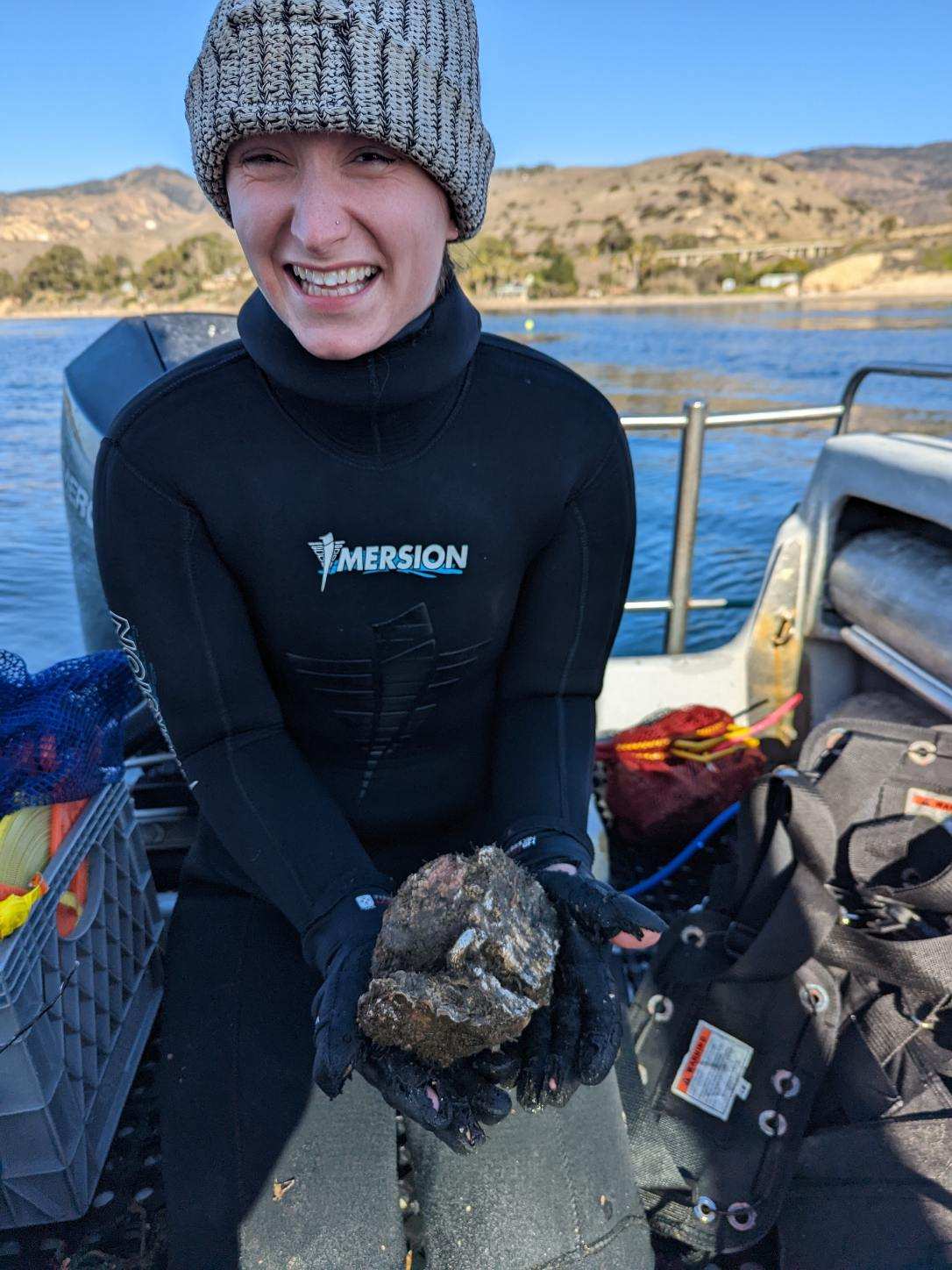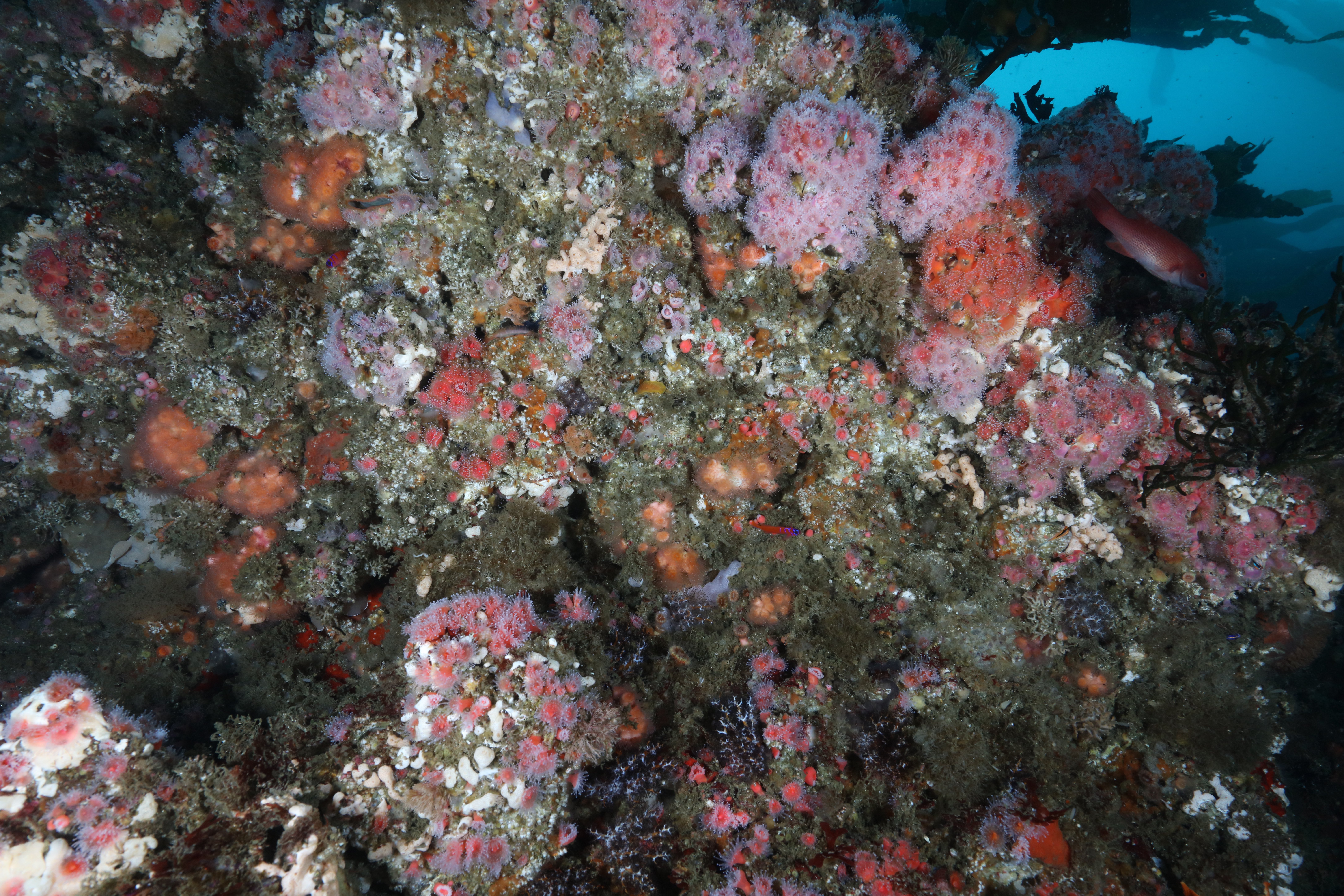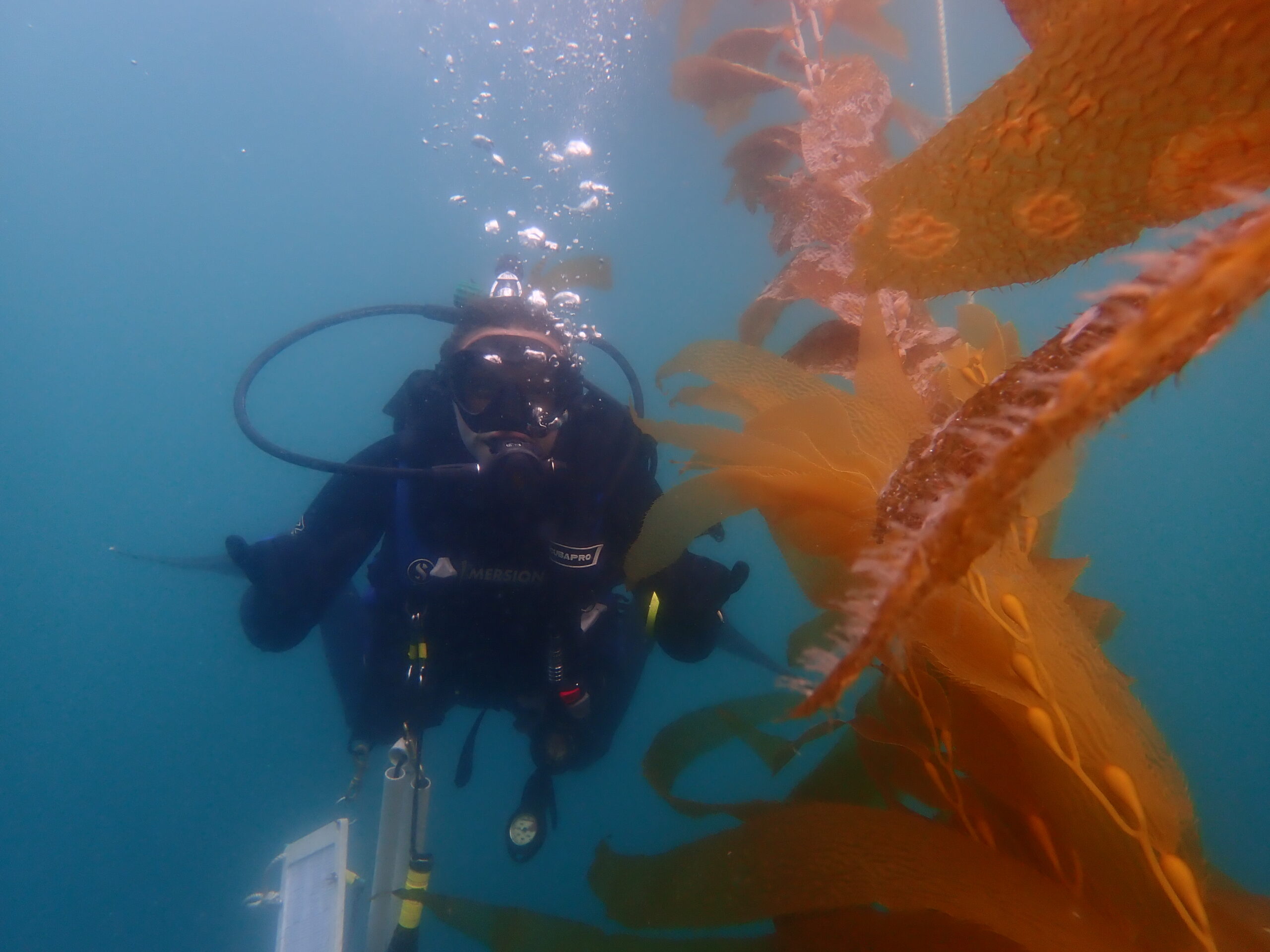
This post is part of the LTER’s Short Stories About Long-Term Research (SSALTER) Blog, a graduate student driven blog about research, life in the field, and more. For more information, including submission guidelines, see lternet.edu/SSALTER
A picturesque study system
Whenever I jump into the blue-green surface waters and descend towards the bottom, I am reminded of the powerful, yet serene beauty of kelp forests. For many divers, the feeling of looking up and around, taking in the sights of fishes schooling or slowly circling kelp plants, or the light dancing in between kelp fronds is enough to take your breath away. As a benthic ecologist, I usually have to remind myself to look up every once in a while, to take in the splendor of the kelp canopy or to catch a glimpse of a passing seven gill shark or a curious seal. More often than not, I am looking towards the rocky substrate, scanning for tiny mobile animals, or assessing the diversity of the sessile, non-moving critters that carpet the bedrock. The closer I get and the longer I spend looking, the more there is to see. It is these rich, highly diverse habitats that researchers at the Santa Barbara Coastal LTER call our study ecosystem.

Credit: SBC LTER, CC BY-SA 4.0.
Over the last 23 years, divers have surveyed communities at 11 local reefs to assess how these dynamic systems change in response to environmental variability, disturbance, fishing, and shifts in the abundance of our major foundation species, giant kelp. Though we have learned a lot about what drives changes in kelp forest community structure, there is still much to learn about most of the organisms that inhabit this ecosystem. For example, of the many animals that live their lives permanently attached to the rocky substrate, what are they eating? To begin to answer this question, I set out on a multiyear project to assess what one kelp forest inhabitant, the giant rock scallop, consumes on a seasonal time scale. Over the course of two years, I collected rock scallops from two of our kelp forest sites, isolated their guts, and then measured what they were eating compared to what the plankton community looked like at that time.
Rock scallops abound – if you can spot them!
Rock scallop shells, it turns out, are remarkably sharp. Each shell is lined with rows and rows of raised spiny bumps. I never felt those bumps slice through my neoprene gloves, but I would inevitably return to the surface with more rips in the tips of my fingers than when I first jumped into the water. For the older animals, their shells are covered in critters, particularly in layers of sponges, tunicates, and tube-dwelling worms. If you don’t spot their bright, orange-colored mantle before they quickly close their shells, they blend seamlessly into the reef, perfectly camouflaged against any potential threats. On more occasions than I would like to admit, I would find a perfect scallop for collection, turn my eyes away briefly to locate my chisel, and when I glanced back at the reef wall, it would have closed its shell, hiding to escape me.

Credit: Clint Nelson, SBC LTER, CC BY-SA 4.0.
There are many cryptic creatures on rocky reefs, blending into their habitat and making it easy to miss them if you are not looking with a purpose. As divers, we call it developing a “search image” for species that are otherwise difficult to spot. For rock scallops, we develop an image for their frilly mantle against the oranges, pinks, yellows, and browns making up the backdrop of the reef. After years of collecting them, that mantle is now one of the first things I notice when I scan the substrate to count other animals and algae in my survey quadrats. Once you see them, you can appreciate how abundant they are on our reefs, particularly on rocky walls or along channels with high relief, silently filtering out plankton from the passing water.

Credit: SCB MBON, used with permission
Kelp forests – eternally captivating
Each day diving in kelp forests is an adventure, offering endless opportunities to observe our local species. After many dives throughout my PhD, I can appreciate the diversity of creatures that make temperate rocky reefs such an exciting habitat to study, and I can also appreciate how truly lucky I am to be able to observe these organisms in situ. There is still so much for us to learn about our local ecosystem, and I look forward to continuing to share what we discover about kelp forest inhabitants, including the giant rock scallop, with the world.

Credit: Clint Nelson, SBC LTER, CC BY-SA 4.0.

Kristen Michaud is a PhD candidate in Robert Miller’s lab at UC Santa Barbara and has been working with the SBC LTER since she was an REU student in 2017. Her research focuses on the abiotic and biotic factors that influence benthic community dynamics in Santa Barbara Channel kelp forests. She is particularly interested in the effects of warming, food availability, and competition on sessile suspension feeding invertebrates and how these communities have shifted over time.










